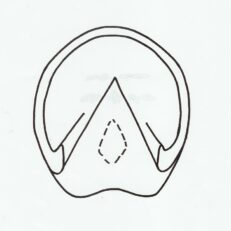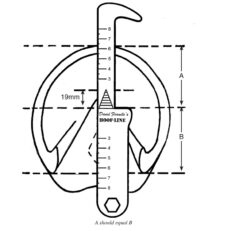Category Archives: Hoof Physiology
THE NATURAL HOOF SHAPE and ‘RIGHT HANDED DISEASE’.
To quote Dr Doug Butler in his book The Principles of Horseshoeing, ‘The hardest thing a farrier has to deal with is making his hands do exactly what his mind and eyes are telling them to do.’ And indeed it seems that as soon as some farriers pick up the sole knife or the nippers or the rasp, from there on the hoof takes on a completely different shape from that which was first intended.
IF we use the rasp too heavily when dressing the front of the hoof and IF, instead of just correcting the thickness at the toe, we allow the rasp to continue the stroke to go past the toe section and along the side walls, the hoof will have a correct toe but narrow sides and the wrong shape hoof.
When rasping the toe it is important to do just that, and not allow the rasp to travel around the side of the hoof. It may help to mark the outer limits of the toe with a … Continue Reading ››
SHORT FROGS, LONG FROGS AND BENT FROGS
- The presence of long toes/low heels
- The presence of high heels/short toes
- The presence of uncontrolled flares anywhere in the hoof wall.


